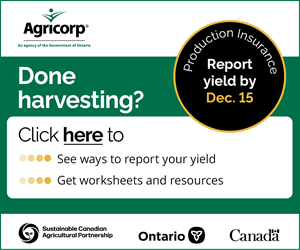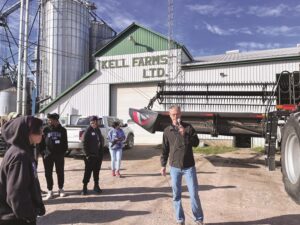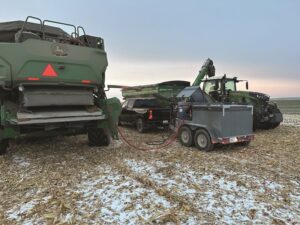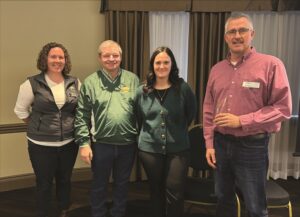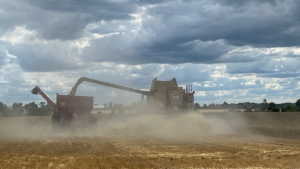Fixing gaps in Canada’s agricultural innovation ecosystem
Endemic barriers stifling success of new and upcoming innovations

Canada is a powerhouse of agricultural innovation, but it lags behind in bringing new products and approaches to the hands of farmers and food processors.
Remedying the problem, according to some industry groups, requires a more collaborative approach in research and development, streamlined regulations, and clear requirements for securing public funding, among other changes. Efforts to spur the government to take such actions are ongoing.
INVOLVE FARMERS FIRST
“The process by which innovations get developed and ultimately commercialized is missing a key component – the farmers themselves,” says Dave Smardon, president and chief executive officer of agri-food innovation accelerator Bioenterprise. In Smardon’s experience, innovators failing to actually go to the farm with their ideas and for troubleshooting is a perennial problem, where good ideas lead to products that farmers either don’t find useful or can’t be sold at a price point that farmers are willing to pay.
This state of affairs is also present across research participants, including private individuals and academic institutions. Canada’s geography and the significant differences between agriculture in its various regions also lead to a more siloed innovation landscape, implying a wider cultural problem in Canadian innovation.
“It’s logical to expect farmers really don’t know where to find innovation or get involved [in innovation projects] because we have excluded them from the development of agricultural innovation,” says Smardon. He adds that the root of the problem stems from “myopic” government policy and a lack of willingness on the part of provincial governments to engage with those from other provinces.
“We need to take a step back and say what’s it going to take for us to be more Canada-wide and less parochial…You don’t have to eliminate what goes on in the province, but you have to augment it, because innovators in those provinces are going to hit a brick wall at some point.”
REGULATION REFORM
Slow bureaucratic processes and regulatory barriers also contribute to a stifled innovation environment. Smardon says it’s not uncommon, for example, for Canadian companies that have developed innovative products with the support of public money to be allowed to sell their products in the United States—but not in Canada, due to a lack of regulatory approval. He cites Ontario-based Vive Crop Protection as an example of a company that has faced this problem—and a company whose founders describe their venture as “an overnight success that took twenty years,” largely due to domestic regulatory barriers.
Chris Conway, CEO of Food and Beverage Ontario, also points to the need for regulatory reforms. Processors sometimes have to wait a year or more for the Canadian Food Inspection Agency to give the green light for the use of imported technology, for example. At the same time, anti-greenwashing legislation has prompted many companies to abandon sustainability claims altogether, even if they are true and verifiable, for fear of being targeted by groups opposed to their products. The general burden imposed by regulation makes attracting investment more challenging as well—something particularly concerning, says Conway, in light of the background economic instability stemming from the current President of the United States, and the simultaneous desire among many to reduce Canada’s dependence on American food processing.
Paul Hoekstra, Grain Farmers of Ontario’s vice president of strategic development and a participant on the Bioenterprise scientific advisory committee, says governments and the agricultural sector also have to recognize that incentives are necessary to attract investment and innovation, in light of the much larger market available south of the border. And those incentives need to be directed at both start-up and scale-up efforts.
“We do a good job creating innovation, but how do we make that scalable?” he says, later mentioning tax incentives and suitable risk management programs as potential means of investment attraction.
“Some of our markets are small. There’s also a need for public research to offset private innovation.”
ACCELERATOR PROGRAM REFORM
Conway also believes the means by which governments provide accelerator funding to food and beverage innovators needs reform.
The application process for funding programs, he says, can be very time-consuming. Deliverables and key performance indicators are also numerous, and at times, perceived to be only tangentially related to the innovation or issue the innovation is trying to solve, such as human resource or health and safety indicators.
“You’re really getting into a lot when you get into some of these programs,” says Conway. Indeed, they can be so burdensome for processors – many of which are consistently operating at flat-out capacity – financial assistance programs can be left with few, if any, applicants.
“That looks terrible for the industry,” says Conway, referring to the government’s negative perception of food processors when program uptake is left wanting. Still, application complexity is “increasing all the time.”
BETTER PLANNING AND COMMUNICATION
The quality and volume of industry consultation on the part of the government have also declined.
Conway points to the federal government’s various plastics reduction initiatives, designed to achieve zero plastic waste, as an area where sudden policy change has left food processors scrambling to ensure they stay compliant.
“The [government] had not figured things out at all…It was kind of shocking,” says Conway, citing an instance where regulations from the top changed in a way that did not fit existing recycling programs. Food and Beverage Ontario members would instead like to see “more comprehensive consultation on federal initiatives” before announcements are made.
Basic government accessibility has itself been a problem in some instances, with Conway finding it increasingly difficult to get people in the room – or even on a call – for a discussion. While Agriculture Agri- Food Canada and the province of Ontario have, in his experience, been fairly accessible, Environment and Climate Change Canada has not.
“We held a session at one point on plastics…At first, they said they wouldn’t attend at all. Then they said they would attend online but not comment,” says Conway. “Compared to what used to go on, the doors were open, you could talk to people.”
“I personally would like to see consultation on the front end…We want these programs to succeed. Talk to the stakeholders. We’ll help. We’re not the enemy. Announcing things and figuring it out later just scares everybody.”
RECOGNIZING THE WIDER PROBLEM
Smardon, too, says the quality of government communication is mixed, with replies from ministers and others sometimes taking an “incredibly frustrating” long time.
Engagement efforts continue, however. For GFO’s part, efforts have been made to directly connect innovators with farmers interested in trialling new technologies through the Farmer-Researcher Connect database. And in March 2024, Bioenterprise and other stakeholders approached the federal government to start addressing many endemic issues in Canada’s innovation-commercialization process.
Roundtables were sponsored across the country involving farmers, producer organizations, people who have worked within the innovation system, and many others. Reports were generated based on the roundtable findings and delivered to the government.
Smardon says the “similarity” of the reports was uncanny, with the main message directed at the government being “take these 26 issues, focus on a few at a time, and we’re going to work through them until we’ve done them all.” A recommendation that $50 million be set aside to facilitate remedial work in the innovation ecosystem was also made.
“We said to these government folks – this isn’t going away. And we’re not going away…We’re going to be coming at you every few months to say, ‘What are we doing next?’” •


